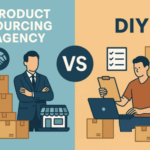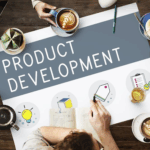Outsourcing has become more than a trend; it’s a strategic move for many companies. When it comes to product development, outsourcing helps businesses punch above their weight. It enables faster development, access to global talent, and cost control.
So, what is outsourced product development? It means hiring external teams to build your product. Instead of relying only on in-house staff, companies tap into global expertise. Startups and giants alike use this model to speed up innovation.
The outsourcing market is booming. In 2023, the global outsourcing market reached $572 billion (Statista, 2024). This article will explore what outsourced product development is, why it matters, and how to do it right.
Understanding Outsourced Product Development
Outsourced product development (OPD) involves external teams handling part or all of product creation. This can range from ideation to deployment.
There are three major types:
- Full-cycle outsourcing: The vendor manages the entire process from idea to launch.
- Partial outsourcing: Companies outsource modules or stages (like UI/UX or QA).
- Offshore/Nearshore outsourcing: Working with partners in different time zones for cost or skill advantages.
So why not build everything in-house? Because it can be time-consuming and costly. OPD gives you wings without burning a hole in your pocket.
Why Companies Choose To Outsource: More Bang for Your Buck
Cost-saving isn’t the only reason companies go down this road. OPD also enables rapid scaling. According to Deloitte’s 2023 Global Outsourcing Survey, 70% of firms outsource to cut costs, but 40% do it to enhance flexibility.
Here are the key reasons:
- Cost-effectiveness: Avoid full-time salaries, infrastructure, and training costs.
- Access to global talent: Skill gaps are common. OPD bridges them efficiently.
- Faster time-to-market: Outsourced teams specialize in lean development.
- Focus on core activities: Let your internal team focus on strategy, not coding.
- Scalability: Need 5 developers today and 15 tomorrow? No problem.
Even tech giants use outsourcing. WhatsApp outsourced app development during its early years. Slack used external help for app design. If they can do it, so can you.
Key Stages Of Outsourced Product Development:
OPD isn’t just about hiring coders. It follows a structured process. Think of it as baking a cake—you need the right ingredients in the right order.
-
Ideation and Planning:
Share your vision and business goals. The outsourced team studies market trends.
-
Design and Prototyping:
Designers create user-centric wireframes. Rapid prototyping helps refine features.
-
Development:
Agile sprints turn designs into working software. Regular updates keep you in the loop.
-
Testing and QA:
Bugs are caught through manual and automated tests. User feedback is also vital.
-
Deployment and Maintenance:
The product goes live. Teams monitor performance and apply patches.
A project management tool like Jira or Asana keeps everyone on the same page. Tools like Slack or Zoom help bridge the distance.
Benefits Of Outsourced Product Development
OPD delivers more than just cost savings. It boosts quality, speed, and market fit.
- Increased efficiency: Specialized teams avoid common development pitfalls.
- Budget control: Fixed-price models and hourly billing offer flexibility.
- Innovation access: Tap into the latest tech like AI and blockchain.
- Round-the-clock productivity: Teams in different time zones mean continuous work.
- Lower risks: Experienced vendors understand product lifecycles.
According to McKinsey (2023), businesses that outsource achieve 23% faster product delivery. That’s a real leg-up in a competitive market.
Challenges and Risks: Every Rose Has Its Thorn
Despite its perks, OPD isn’t without challenges. Ignoring these can cost you dearly.
- Communication gaps: Misunderstandings lead to wrong features or missed deadlines.
- Time zone friction: Delays in feedback can slow progress.
- Quality assurance: Not all vendors maintain high standards.
- Security risks: Data breaches or IP theft can happen.
- Vendor dependency: You might rely too heavily on one partner.
How to tackle them:
- Use clear contracts with SLAs and KPIs.
- Sign NDAs and non-compete agreements.
- Choose vendors with ISO or SOC certifications.
- Use tools like Trello or ClickUp for transparency.
Choosing the Right OPD Partner:
Choosing the right partner makes or breaks your project. Don’t rush it.
Checklist:
- Experience: Look for industry-specific expertise.
- Portfolio: Ask for case studies and past client work.
- Technology stack: Ensure they know the tools you need.
- Communication: Regular updates, dedicated managers, and clear documentation are a must.
- Cultural fit: Shared work ethics improve collaboration.
- Security standards: Ask about encryption, access control, and compliance.
BrandNewMD is one of the best sourcing companies for OPD. Their expert teams ensure end-to-end delivery. Check out BrandNewMD to find the perfect outsourcing match for your next big idea.
Future of OPD: The Sky’s the Limit
OPD is evolving. The future looks bright for businesses open to remote collaboration.
Trends to watch:
- AI integration: Automating repetitive coding and testing tasks.
- Agile + DevOps: Fast, reliable releases using integrated workflows.
- Hybrid teams: Mixing in-house and outsourced talent for flexibility.
- Niche specialization: Vendors now offer deep expertise in specific industries.
- Sustainable development: Focus on eco-friendly and ethical practices.
According to Gartner (2024), 75% of organizations will use hybrid product development models by 2026. Staying ahead of this curve could be your secret weapon.
Conclusion:
What is outsourced product development? It’s your ticket to faster, smarter, and leaner growth. With the right partner, you can build world-class products while focusing on your core mission.
Avoid pitfalls by planning carefully. Embrace the benefits of cost savings, talent access, and rapid delivery. OPD isn’t just for tech giants. It’s for any business ready to grow wisely.
Ready to outsource your next project? Don’t wait for the perfect storm. Visit BrandNewMD and find your perfect match today!











